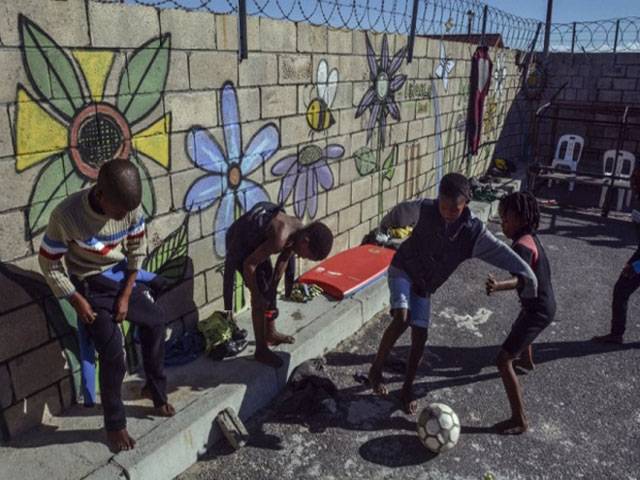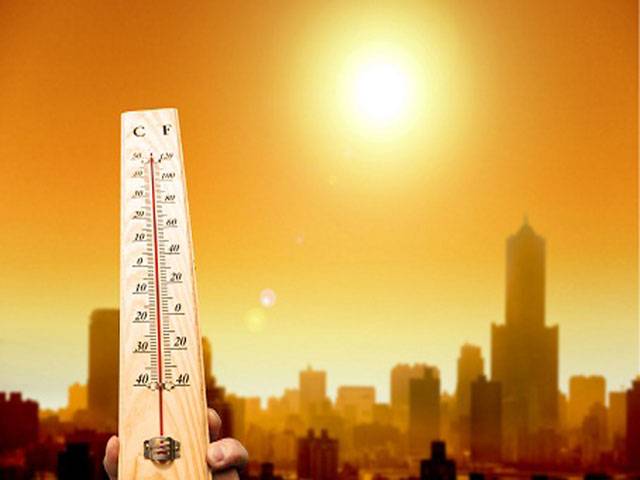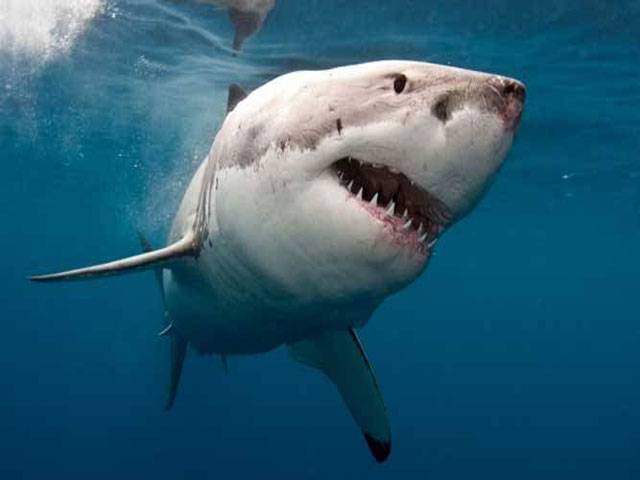App usage soars as
smartphones take hold
SAN FRANCISCO (AFP): Global app usage soared in 2015 as a growing base of smartphone users found new ways to use their devices, a study showed Tuesday. The survey by Yahoo-owned analytics firm Flurry found app usage on mobile devices jumped 58 percent last year, cooling slightly from 76 percent growth in 2014. A big factor was growth in “personalization” which allow people to customize their devices or correspondence including lockscreens and emoji keyboards, including reality star Kim Kardashian’s “Kimoji.” These apps saw 344 percent growth last year. News and magazine apps grew 141 percent meanwhile, signaling a shift in media consumption from television and PCs to smartphones and other mobile devices. Productivity apps such as Google Docs and Slack were up 119 percent,
Flurry found, while lifestyle and shopping apps grew 80 percent - another sign of ecommerce turning mobile.
Flurry vice president Simon Khalaf said one of the reasons for the growth was increased used of big-screen smartphones or “phablets,” which offer a better view for video and other uses. “Time spent on phablets grew 334 percent year over year (2.9 times more than the average), compared to 117 percent for all form factors,” he said in a blog.
“With time spent on mobile surpassing that on television, and phablets posting astonishing growth in media consumption, it appears that the cable industry will find in the phablet and its apps its long awaited digital nemesis.” A separate report this week by the App Association found 3.97 million apps available at the end of 2015, generating revenues of $120 billion.
W Africa at highest risk of
bat-to-human virus spread
LONDON (Reuters): Sub-Saharan Africa and South East Asia are most at risk from bat viruses jumping to humans and causing new diseases that could lead to deadly outbreaks, scientists warned on Tuesday. Approximately 60 to 75 percent of emerging infectious diseases are so-called “zoonotic events” - where animal diseases jump into people - and bats in particular are known to carry many zoonotic viruses. The tiny animals are the suspected origin of rabies, Ebola, SARS (Severe Acute Respiratory Syndrome) and possibly Middle East Respiratory Syndrome (MERS), and could cause other as yet unknown epidemics in future. Scientists at University College London (UCL), the Zoological Society of London and Edinburgh University aimed to map out the highest-risk areas, using a variety of factors including large numbers of bat viruses found locally, increasing population pressure, and hunting bats for bushmeat.
Kate Jones, UCL’s chair of ecology and biodiversity, said her team first created risk maps for each variable and found, for example, that in mapping for potential human-bat contact, sub-Saharan Africa was a hotspot, while for diversity of bat viruses, South America was at most risk.
“By combining the separate maps, we’ve created the first global picture of the overall risks of bat viruses infecting humans in different regions,” she said. The work was published in journal The American Naturalist. The research, using data published between 1900 and 2013, found that overall West Africa - the epicentre of the recent Ebola outbreak - is at highest risk for zoonotic bat viruses. The wider sub-Saharan Africa region, as well as South East Asia, were also found to be hotspots.
Liam Brierley, a PhD student at Edinburgh University who worked with Jones, said the risk of bat to human virus transmission is being driven higher by large and increasing populations of people and livestock expanding into wild areas such as forests. “People in these areas may also hunt bats for bushmeat, unaware of the risks of transmissible diseases which can occur through touching body fluids and raw meat of bats,” he said.
Giant statue for China’s
Chairman Mao
BEIJING (AFP): A gargantuan gold-painted statue of Communist China’s founding father Mao Zedong has been erected in open countryside by a group of capitalists at a cost of 3 million yuan ($460,000), reports said. The statue towers some 37 metres (121 feet) over empty fields in the central province of Henan and shows the man who ruled China with an iron grip for nearly three decades seated in thoughtful repose, his hands crossed. Its construction was reportedly funded by several local entrepreneurs and finished in December after nine months of labour, the HMR.cn portal said on Monday. Despite being blamed for millions of deaths, Mao is still widely revered in China, where the Communist leadership tightly controls public discussion of history and seeks to use his legacy to shore up its support. China’s current President Xi Jinping has praised Mao as a “great figure” and revived some of his rhetoric and centralisation of power, while following the party’s 1980s conclusion that he also made “mistakes”. Some Internet users criticised the statue, pointing out its location in Henan, the centre of a famine in the late 1950s resulting from Mao’s economic policies estimated to have killed as many as 40 million people.
“Have you forgotten about the Great Famine, building that?” asked one poster on Sina Weibo, a Chinese equivalent of Twitter.
Others questioned the statue’s resemblance to the Great Helmsman, who also launched the decade-long Cultural Revolution that saw violence and destruction nationwide.
But many heaped praise on the statue, with one Weibo user simply saying: “Badass”.
S African race storm over black
‘monkey’ Facebook slur
JOHANNESBURG(AFP): South Africa’s ruling ANC party on Tuesday launched legal action over a white realtor’s Facebook comments that compared black beachgoers to monkeys in a growing row about post-apartheid racism. The African National Congress, which led the struggle against white-minority rule, said it was pursuing a case against Penny Sparrow and a recent spate of other allegedly racist online postings. Sparrow’s comments sparked a storm of protest and renewed debate about racism among white people in the country 22 years since Nelson Mandela came to power vowing national reconciliation. The ANC said in a statement that it was laying “charges of crimen injuria (intentionally impairing the dignity of others) against a number of South Africans who have made racist remarks on a number of social media.”
Sparrow, a real estate agent from Park Rynie in the southern province of KwaZulu-Natal, complained on Facebook about black people littering beaches during New Year’s celebrations.
“From now I shall address the blacks of South Africa as monkeys as I see the cute little wild monkeys do the same - pick and drop litter,” she said in the posting on Saturday. The ANC said it would also lodge a complaint with the South African Human Rights Commission (SAHRC) because such comments “belittled” and “insulted” black South Africans.
“It is troubling that bigots who once kept their views to themselves now seem emboldened,” party spokesman Zizi Kodwa said. Sparrow later deleted the post and apologised, saying she did not “mean it to be a personal insult to anyone”. Several other white South Africans have also been subject to fierce criticism over tweets with allegedly racial connotations.
Prominent economic analyst Chris Hart was suspended by Standard Bank for what it said were “racist undertones” in a tweet suggesting there was a a growing “hatred towards minorities”, seen as referring to the treatment of whites. The furore has highlighted racial divisions and sensitivities in South Africa, which faces a dire economic outlook as growth slows sharply and mass unemployment persists.
A survey in December by the Institute for Justice and Reconciliation concluded that most South Africans felt “race relations have either stayed the same or deteriorated” since the first democratic elections in 1994. The main opposition Democratic Alliance party, of which Sparrow is a member, stressed it abhorred racism and laid criminal charges against her for “dehumanising black South Africans”.
Heatwaves, drought may curb
global power output
PARIS(AFP): Thousands of power plants worldwide face sharp reductions in electricity output by mid-century due to more frequent heatwaves and drought driven by global warming, according to a study published Monday. “We need to be concerned as electricity will become more expensive and less reliable in the future due to climate change,” co-author Keywan Riahi of the International Institute for Applied Systems Analysis in Austria told AFP. If warming continues unchecked, higher temperatures and water shortages could, by 2050, cut capacity in hydro-electric plants by nearly four percent, and in thermoelectric plants - powered by fossil fuels, nuclear power or biomass - by 12 percent.
Even if the target embraced at the Paris climate summit in December is met - limiting global temperature rise to less than two degrees Celsius (3.6 degrees Fahrenheit) compared to pre-industrial levels - power capacity would still drop significantly, according to the research. Hydro- and thermoelectric plants, which together provide 98 percent of the global electricity supply, both depend on water to cool machinery or generate power.
Improvements in efficiency and switching types of fuel, however, would be one way to avoid future shortages of water and power, the study said. Especially vulnerable regions include the United States, southern South America, southern Africa, central and southern Europe, and southeast Asia.
The study analysed data from nearly four-fifths of the world’s hydro-electric plants, and more than a quarter of thermoelectric ones.
“Many of the plants that we couldn’t include in our analysis will be vulnerable to climate change as well, but we simply didn’t have the information,” Riahi said by email. Water consumption for power generation is expected to double within 40 years, according to the study, published in Nature Climate Change.
In many regions, this vastly expanded consumption will clash head on - particularly in rapidly expanding economies - with increased demands from agriculture and domestic use, neither of which are taken into account in this study. “Climate change will amplify this competition, reduce reliability of the systems, and increase the risk of water and electric shortages,” Riahi commented. “However, there is the possibility to adapt” in both types of power plants, he added.
Boy bitten by shark in
Australia’s Great Barrier Reef
SYDNEY (AFP): An 11-year-old boy was mauled by a shark in the waters of Australia’s Great Barrier Reef Tuesday, officials said, the second attack in the area in four days.
The boy was “wading in knee-high water” on the edge of a beach on Heron Island, some 460 kilometres (285 miles) north of Queensland state’s capital Brisbane, when he was bitten by a black-tip reef shark on his lower right leg, according to Queensland Ambulance. “The child was removed from the water by his father and presented to the medical centre (on the island), where he was treated by a registered nurse,” paramedic Brad Lawson said. A Queensland Ambulance spokesman told AFP the injuries were significant but not life-threatening and the boy was in a stable condition. A black-tip reef shark is usually found around coral reefs and shoals and can grow up to 1.8 metres long. The attack comes after a 31-year-old man was bitten by a shark - reportedly a three-metre animal - on Saturday while spearfishing off Miall Island, also near the southern end of the reef.
Ambulance officials told the Australian Broadcasting Corporation that the man sustained the wounds while repeatedly punching the shark until it left.
A spate of attacks in neighbouring New South Wales state last year led authorities to implement a range of shark-prevention measures to reduce encounters during the busy 2015-16 summer season.
Measures include the testing of aerial drones to track sharks’ movements, although the state government has ruled out culling the animals. There were 14 attacks in New South Wales last year - including the death of a Japanese surfer - compared to three in 2014, according to data compiled by Sydney’s Taronga Zoo.
In Queensland, there were four non-fatal attacks in 2015, compared to one in 2014. Experts say attacks are increasing as water sports become more popular and bait fish move closer to shore, but fatalities remain rare.











